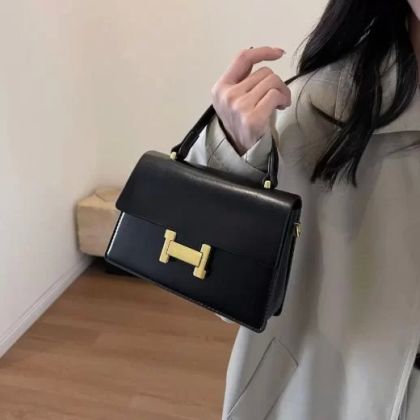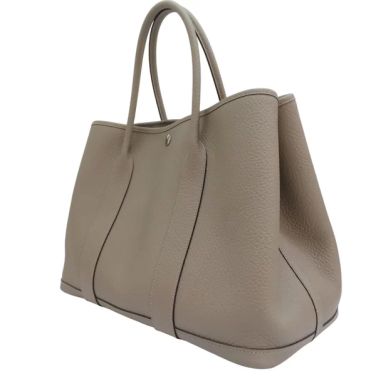Handbag Care for Long-Term Investment: Tips for Keeping Your Designer Bags in Top Condition
Investing in a designer handbag is more than just a fashion choice—it's an investment. Whether you're purchasing a luxury bag for its timeless appeal or its resale value, maintaining its condition is key to preserving its longevity and value. In this article, we’ll discuss the best practices for handbag care, specifically for those who want to ensure their bags remain in excellent condition for years to come.
1. Why Handbag Care Matters for Long-Term Investment
When you purchase a designer handbag, you're not just buying a luxury item, you're making an investment. Many high-end bags from brands like Louis Vuitton, Chanel, and Hermes appreciate in value over time, especially if kept in pristine condition. This is why proper care is crucial to retaining the bag's beauty and value. Over time, wear and tear can significantly reduce the bag's resale value, and it may even result in irreparable damage. Therefore, knowing how to care for your designer handbag can extend its life and help you enjoy its beauty for many years.
One of the best ways to protect your handbag is by paying attention to how it’s stored, cleaned, and used. Regular maintenance, such as cleaning and conditioning the leather, is essential. Additionally, taking steps to avoid common mistakes like overstuffing the bag or exposing it to extreme weather conditions will help preserve its condition.
2. Storing Your Handbag Correctly
Storage plays a crucial role in the longevity of your handbag. Storing your bag properly helps avoid damage and ensures it retains its shape and structure. Here are some tips for storing your designer handbag:
- Use Dust Bags: Always store your handbag in the dust bag provided by the manufacturer. Dust bags protect the bag from dust, dirt, and light, which can cause fading or discoloration over time.
- Avoid Hanging Your Bag: Hanging your handbag on hooks or doorknobs can stretch the straps and affect its shape. It's best to store your bag upright, either in a drawer or on a shelf.
- Use Shape Retainers: For bags that are prone to losing shape, consider using shape retainers or stuffing the bag with acid-free tissue paper to help it keep its form.
3. Regular Cleaning and Maintenance
One of the most important aspects of handbag care is cleaning. Regular cleaning can prevent dirt and grime from building up and causing damage to your bag's material. Here are a few essential cleaning tips for different types of materials:
- Leather Bags: Leather is a common material used for luxury handbags, but it requires regular care to keep it looking its best. Use a soft cloth to wipe down the surface and a leather cleaner or conditioner to keep the leather hydrated. Avoid using harsh chemicals or cleaners that could damage the leather.
- Suede Bags: Suede is delicate and requires more careful attention. Use a suede brush to remove dirt and a suede protector spray to guard against stains. Always store your suede bags in a dust bag to prevent damage.
- Fabric Bags: For fabric bags, such as those made from canvas or nylon, a gentle wash with mild soap and water is recommended. Be sure to air dry them completely before storing.
4. Protecting Your Bag from the Elements
Exposure to weather conditions, such as rain, snow, or direct sunlight, can cause irreversible damage to your handbag. Here’s how to protect your bag from environmental factors:
- Avoid Rain: While leather bags can handle some moisture, they should not be exposed to heavy rain. Consider investing in a waterproofing spray or carrying an umbrella to protect your bag during inclement weather.
- Sun Exposure: Prolonged exposure to direct sunlight can cause fading and cracking of the material. Store your handbag away from direct light when not in use.
- Heat Sources: Never place your handbag near a heater or radiator. High temperatures can damage the leather, causing it to dry out and crack.
5. How to Handle Your Handbag to Prevent Damage
Proper usage of your handbag is just as important as caring for it when it’s not in use. Here are some tips on how to handle your bag to prevent unnecessary damage:
- Avoid Overstuffing: Overstuffing your bag can stretch the leather and cause the shape to warp. Stick to packing only the essentials to maintain the bag’s integrity.
- Protect the Hardware: Avoid banging the hardware of your bag against hard surfaces to prevent scratches or dents. Be mindful of your bag’s hardware when placing it down or storing it.
- Handle with Clean Hands: Always make sure your hands are clean before touching your bag to prevent oils and dirt from transferring onto the material.
6. When to Seek Professional Care for Your Handbag
Even with regular maintenance, certain issues might require professional attention. Here are some scenarios where it’s best to seek help from a professional:
- Reconditioning: If your bag’s leather has become dry, cracked, or discolored, a professional reconditioning service can restore its appearance.
- Repairs: If your bag has a broken zipper, damaged hardware, or needs a new strap, it’s best to take it to a trusted repair service to ensure quality work.
- Cleaning: For stubborn stains or delicate materials like suede, professional cleaning can provide a deeper, safer clean.
Taking care of your designer handbag not only helps preserve its beauty but also protects your investment. By following these simple steps, you can ensure that your luxury bag remains in excellent condition for many years, providing you with lasting value and enjoyment.














